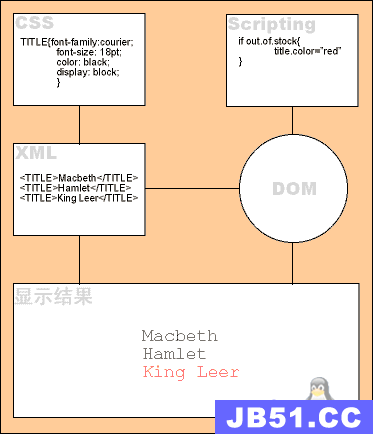1.介绍
读取和设置xml配置文件是最常用的操作,TinyXML是一个开源的解析XML的C++解析库,能够在Windows或Linux中编译。这个解析库的模型通过解析XML文件,然后在内存中生成DOM模型,从而让我们很方便的遍历这棵XML树。
下载TinyXML的网址:http://www.grinninglizard.com/tinyxml/
使用TinyXML只需要将其中的6个文件拷贝到项目中就可以直接使用了,这六个文件是:
tinyxml.h、tinystr.h、tinystr.cpp、tinyxml.cpp、tinyxmlerror.cpp、tinyxmlparser.cpp。
2.读取XML文件
如读取文件a.xml:
<Todo> <Item priority="1"> <bold> Book store! </bold> </Item> <Item priority="2"> book1 </Item> <Item priority="2"> book2 </Item> </Todo>上面的是要读取的XML文件。
#include "tinyxml.h"
#include <iostream>
#include <string>
using namespace std;
enum SuccessEnum {FAILURE,SUCCESS};
SuccessEnum loadXML()
{
tixmlDocument doc;
if(!doc.LoadFile("a.xml"))
{
cerr << doc.ErrorDesc() << endl;
return FAILURE;
}
tixmlElement* root = doc.FirstChildElement();
if(root == NULL)
{
cerr << "Failed to load file: No root element." << endl;
doc.Clear();
return FAILURE;
}
for(tixmlElement* elem = root->FirstChildElement(); elem != NULL; elem = elem->NextSiblingElement())
{
string elemName = elem->Value();
const char* attr;
attr = elem->Attribute("priority");
if(strcmp(attr,"1")==0)
{
tixmlElement* e1 = elem->FirstChildElement("bold");
tixmlNode* e2=e1->FirstChild();
cout<<"priority=1\t"<<e2->ToText()->Value()<<endl;
}
else if(strcmp(attr,"2")==0)
{
tixmlNode* e1 = elem->FirstChild();
cout<<"priority=2\t"<<e1->ToText()->Value()<<endl;
}
}
doc.Clear();
return SUCCESS;
}
int main(int argc,char* argv[])
{
if(loadXML() == FAILURE)
return 1;
return 0;
}
<root>
<Element1 attribute1="some value" />
<Element2 attribute2="2" attribute3="3">
<Element3 attribute4="4" />
Some text.
</Element2>
</root>
生成上面b.xmlL文件代码如下:
#include "tinyxml.h"
#include <iostream>
#include <string>
using namespace std;
enum SuccessEnum {FAILURE,SUCCESS};
SuccessEnum saveXML()
{
tixmlDocument doc;
tixmlElement* root = new tixmlElement("root");
doc.LinkEndChild(root);
tixmlElement* element1 = new tixmlElement("Element1");
root->LinkEndChild(element1);
element1->SetAttribute("attribute1","some value");
tixmlElement* element2 = new tixmlElement("Element2"); ///元素
root->LinkEndChild(element2);
element2->SetAttribute("attribute2","2");
element2->SetAttribute("attribute3","3");
tixmlElement* element3 = new tixmlElement("Element3");
element2->LinkEndChild(element3);
element3->SetAttribute("attribute4","4");
tixmlText* text = new tixmlText("Some text."); ///文本
element2->LinkEndChild(text);
bool success = doc.SaveFile("b.xml");
doc.Clear();
if(success)
return SUCCESS;
else
return FAILURE;
}
int main(int argc,char* argv[])
{
if(saveXML() == FAILURE)
return 1;
return 0;
}
4.重要函数或类型的说明
(1)FirstChildElement(const char* value=0):获取第一个值为value的子节点,value默认值为空,则返回第一个子节点。
(2)NextSiblingElement( const char* _value=0 ) :获得下一个(兄弟)节点。

